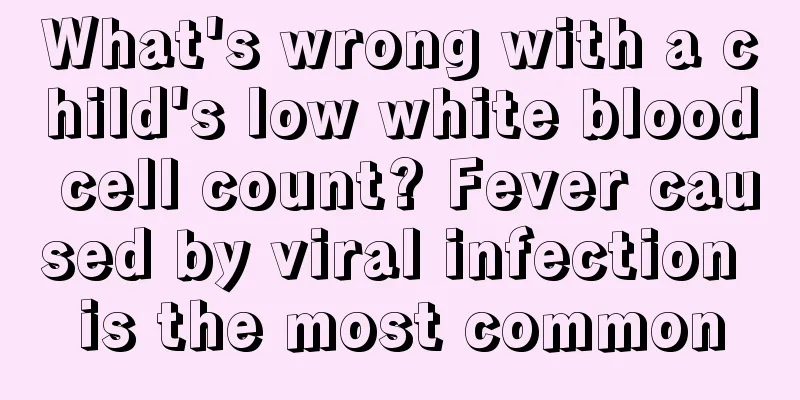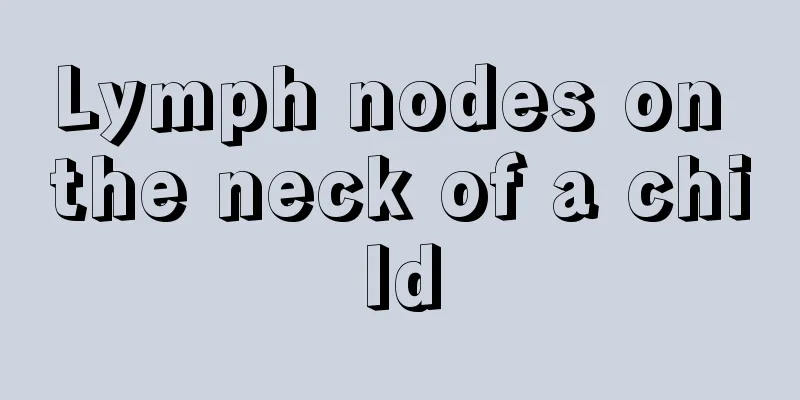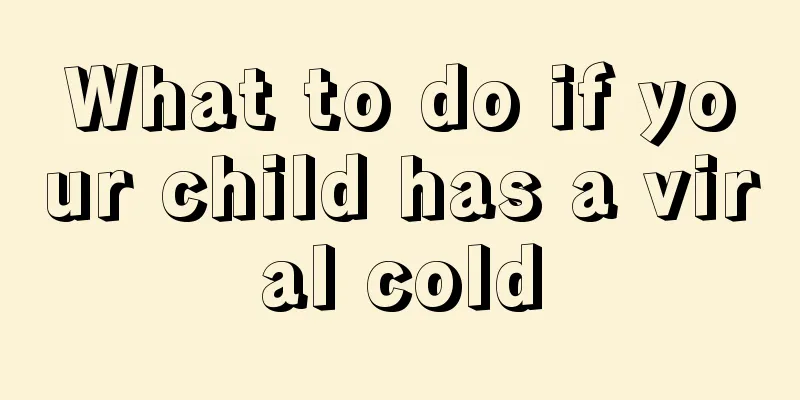What's wrong with a child's low white blood cell count? Fever caused by viral infection is the most common

|
Recently, many children have had recurring fevers. A blood test revealed that the white blood cell count is low, which is caused by a viral infection. To restore the number of white blood cells, the viral cold must be treated in time. If necessary, antiviral drugs should be taken orally and attention should be paid to physical cooling. Children with low white blood cell count are caused by viral infection and fever, so they need to be properly cared for: 1. Physical cooling (1) Drink more warm water, vegetable juice and fruit juice. Let your baby drink more water and replenish body fluids. This is the most basic method of reducing fever. It is very effective and practical and suitable for all babies with fever. Do not give your baby cold water, because fever is often accompanied by gastrointestinal symptoms and coughing. Drinking cold water will aggravate these accompanying symptoms. Give your baby warm water. (2) Warm water bath, that is, wipe the whole body with a warm water towel. This is a great way to cool down any baby who has a fever. The water temperature should be between 32℃ and 34℃, and each wiping should last for more than 10 minutes. The key areas to wipe are the skin folds, such as the neck, armpits, elbows, groin, etc. (3) Warm water bath: The water temperature is about 3℃-4℃ lower than the patient's body temperature, and each bath lasts 5-10 minutes. Many parents think that babies should not be bathed when they have a fever. In fact, on the contrary, giving babies a warm bath can help cool them down. A warm bath is suitable for all babies with a fever. (4) Low-temperature chamber method: Place the sick child in an environment with a room temperature of approximately 24°C to allow the body temperature to slowly drop. In order to allow the skin to come into contact with the outside air and help cool down, people need to wear less clothes. If conditions permit, use air conditioning to lower the room temperature. This method is suitable for babies under 1 month old, especially in summer. Just open the baby's clothes and put him in a cool place, his body temperature will slowly drop. If your baby has chills and shivering when having a fever, you should not use the low-temperature chamber method. (5) Cooling patch: Cooling patch is a new product in recent years and is very popular. In fact, the cooling effect is average and not as exaggerated as the advertisements say. Putting a patch on the baby's forehead will make the baby's head feel more comfortable and the parents will feel more at ease too. It should be beneficial and harmless. (6) Ice compress: There is still much controversy regarding the pros and cons of this method. Some experts believe that ice compresses do more harm than good, because they may cause the capillaries in the baby's skin to contract, hindering heat dissipation and causing the body temperature to be higher, especially if accompanied by chills and shivering. Ice compresses should not be used. 2. Drug treatment If the baby's temperature is still over 38.5℃ after physical cooling treatment, medication should be used to reduce the fever. Since infants and young children have a high water content in their bodies, they are very susceptible to dehydration. Therefore, parents must encourage their infants and young children to drink more boiled water. 3. Daily care Parents should take their children to public places less often. Children’s food must be strictly controlled, and tableware and toys must be disinfected regularly. When the weather turns cold, you should be cautious when eating raw or cold food, and it is best to eat fruit half an hour after a meal. At the same time, you should pay attention to keeping warm and avoid catching cold, which may cause respiratory and digestive tract diseases and reduce the body's resistance. |
<<: How to deal with children's anxiety
>>: What are the calcium supplement recipes for children to increase height?
Recommend
What should I do if my baby has eczema on his arms?
Babies are very important to mothers. Mothers wil...
What to do if the baby does not poop for three days
This is a very extreme problem and also a very ab...
What causes baby's swollen eyes?
When adults have swollen eyes, it is simply becau...
What is precocious puberty?
Both boys and girls may experience precocious pub...
Is the child's leg pain due to calcium deficiency?
Children's leg pain is not necessarily caused...
What foods can help babies digest food?
Newborn babies can just eat breast milk or drink ...
What to do if hand, foot and mouth disease recurs
The weather in summer is quite hot, and it is als...
Symptoms of stomach heat in children
If you feel that your child has symptoms of stoma...
What to do if your eight-month-old baby is very active
At three months old, babies can roll over, at six...
Do children sweat when they have a fever?
Children often have similarities with adults when...
What foods can cause precocious puberty in children?
Precocious puberty is a common problem that has b...
What to do if your child has precocious puberty
Many parents may not know much about precocious p...
What to do if blisters appear on your child's feet
Blisters on children's feet will cause them t...
What should children eat for oral ulcers? Four useful foods recommended
If children have oral ulcers, you can let them ea...
What to do if children have recurrent tonsillitis and fever
Tonsillitis can occur in people of any age. Child...









